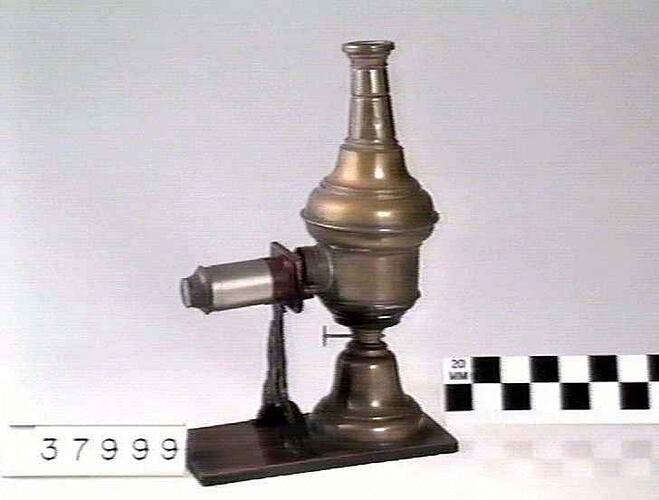Summary
Children's toy magic lantern projector, designed for domestic use with miniature glass slides.
The body is of polished brass and uses a single wick kerosene burner as an illuminant. The ornate lens prop is of die pressed metal, while the slide holder is red enamelled.
The probable manufacturer is the firm of Max Dannhorn, which commenced operations in Nuremberg in 1872. Nuremberg was a major centre for metal toy production and export in the latter part of the 19th century and up to World War I.
While the invention of the magic lantern is generally seen to be in the 17th century, its greatest popularity as an optical projector spans the late 18th Century to the early decades of the 20th Century. It was used both as a means of entertainment and education.
This lantern projector is part of the Francis Collection of pre-cinematic apparatus and ephemera, acquired by the Australian and Victorian Governments in 1975. David Francis was the curator of the National Film and Sound Archive of the British Film Institute as well as being a co-founder of the Museum of the Moving Image in London, which was operational between 1988 and 1999.
Physical Description
The body is of polished brass and uses a single wick kerosene burner as an illuminant. The ornate lens prop is of die pressed metal, while the slide holder is red enamelled.
More Information
-
Collection Names
-
Collecting Areas
-
Acquisition Information
Loan & Subsequent Donation from Australian Film Institute (AFI), Mr David Francis, by Nov 1990
-
Manufacturer (Probable)
-
Collector
Mr David Francis, London, Middlesex, England, Great Britain, 1990
-
Classification
-
Category
-
Discipline
-
Type of item
-
Overall Dimensions
170 mm (Length), 90 mm (Width), 275 mm (Height)
-
Keywords

